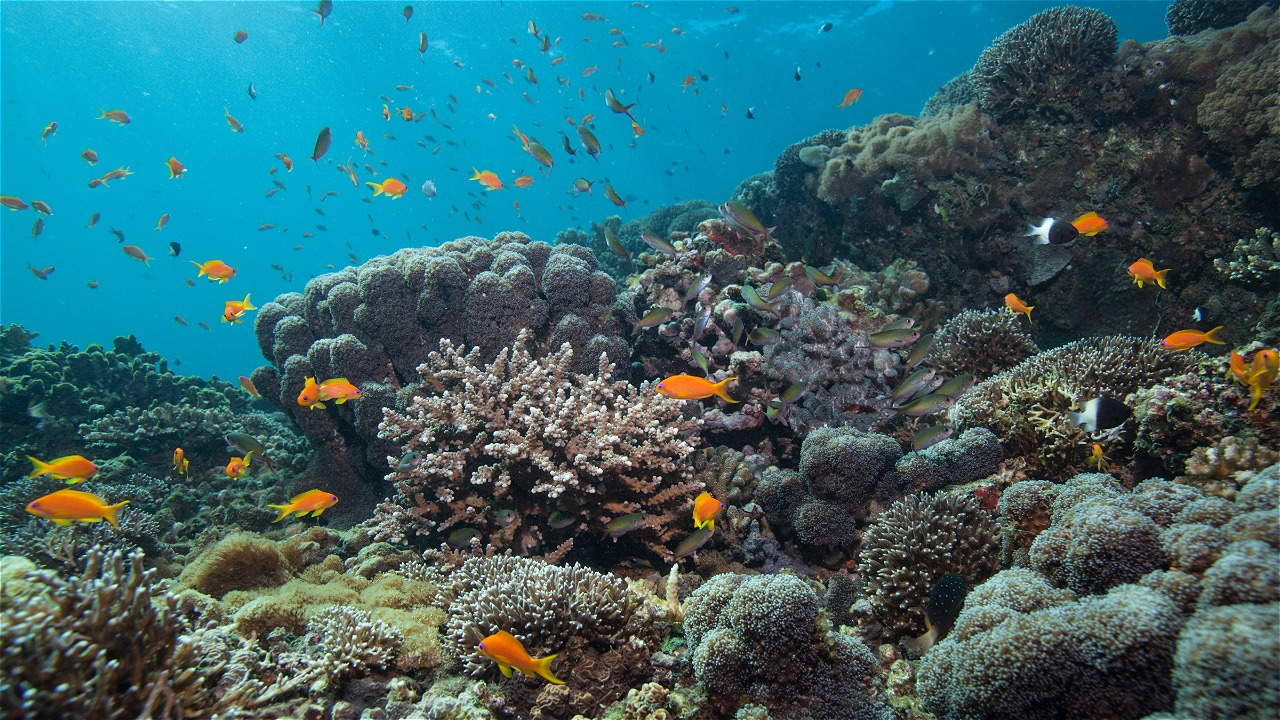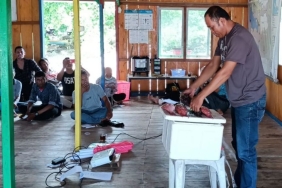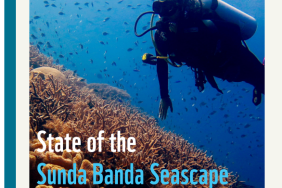HOBA MULUNG: THE STORY OF THE INDIGENOUS PEOPLE OF BARANUSA, ALOR, REOPENING THEIR SEA AFTER A YEAR
By: Nisa Syahidah (Communication & Campaign, Sunda Banda Seascape, WWF-Indonesia)
Sangaji Gini, a traditional elder of the Sandiata tribe, places five chicken feathers on the remaining pieces of bamboo marking the location of the sea closure (hading mulung) that have been uprooted. The five strands symbolize the commitment of the five villages in the Baranusa indigenous community order in West Pantar District, Alor Regency.
Since October 30, 2016, the five villages - Baranusa, Blangmerang, Ilu, Baraler, and Piring Sina villages have closed the waters of Lapang Island to human harvesting of marine products. Lapang Island and Batang Island are areas that are the customary rights of the Baranusa indigenous community, which are also part of the Pantar Strait Aquatic Nature Reserve (SAP) and Surrounding Seas.
As a conservation area, the waters of Lapang Island and Batang Island are important habitats that must be preserved for the sake of biodiversity. For this reason, periodically, through customary institutions, the sea is closed for a year to provide opportunities for marine life to spawn and breed.
That day (10/05/18), after Sangaji Gini recited kata-kata (prayer), the Baranusa community officially reopened 146.22 hectares of waters on the south, east and west sides of Lapang Island for use. Hading mulung leaves the northern part of the island used as a seaweed cultivation site by the community.
"For the sake of the lawu (sea), the land of Baranusa, in the name of the King of Baranusa, on this day, Thursday, May 10, 2018 we break the pole, at the hoba mulung (opening of the sea)," Sangaji said in Baranusa. His hand poured a pinch of rice on the remaining bamboo fragments. The rice grains were immediately swarmed by chickens that had been brought from Baranusa Village to be released on Lapang Island.
"This is our burden to protect this location, which we will take and manage, by five villages in West Pantar sub-district. This location will then be hading mulung (closed) again, within a month or two months, which will later be agreed upon, "he continued.
"We protect this location not for individuals, for all together, and if anyone damages it, the spirits on land, at sea, around Lapang Island and Batang Island will come to them, and they will receive what they have made. May Allah have mercy on all of us, and the generations to come," Sangaji Gini concluded, still in Baranusa. This ritual is performed repeatedly at four hading mulung points scattered on Lapang Island, an island that has been a source of livelihood for the Baranusa community since long ago.
Hading mulung and hoba mulung are examples of Indigenous and Community Conserved Areas (ICCAs) management schemes. Through these schemes, WWF-Indonesia promotes the integration of local values into better governance of marine and coastal resources.
"Mr. Raja Baranusa, we are now on the right path," the PJS Bupati of Alor, expressed his respect to Mangkup Radja Baso, Raja Baranusa. Mr. Mashuri AP Uba, West Pantar Sub-District Head, along with all the traditional leaders and the people of Baranusa from the five villages also sat in the space between the houses built from bamboo on this small island.
"The indigenous people of Baranusa have shown support to help protect this conservation area. This is an effort to protect and sustain the common life of the people of Baranusa in particular, to the people of Alor - and the people of East Nusa Tenggara province in general. In order for our natural resources to be managed sustainably, this local wisdom must be perpetuated from generation to generation," he continued.
The inauguration of hoba mulung that afternoon was also attended by the Regional People's Representative Council (DPRD) of Alor Regency, the National Marine Conservation Area Center (BKKPN) Kupang, the Marine and Fisheries Resources Monitoring (PSDKP) Kupang, the Marine and Fisheries Service (DKP) of NTT Province, DKP Alor Regency, Babinsa, Alor Police, and WWF-Indonesia.
King Baranusa then led the Baranusa lego-lego (dance) together. Forming a semicircle, their hands joined together and their feet moved in sync, in the same direction. The dance symbolizes the spirit of unity in building the village. In this case, all the stakeholders are moving together, to protect the sea.




